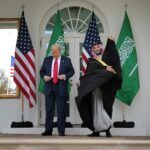Gulf sovereign wealth funds invest $2.3 billion in China
Cash from the Gulf is pouring into Asia, as Chinese financiers and regulators make frequent trips to engage with the Middle East market

Citizens rest beside the fountain in front of Hong Kong's Exchange Square. (Photo: Getty Images)
Cash from Gulf sovereign wealth funds is pouring into China and Southeast Asia as the region’s deep pockets look beyond the U.S. and Europe for investment targets.
About $2.3 billion of sovereign capital from the Middle East...












 Add The Circuit on Google
Add The Circuit on Google